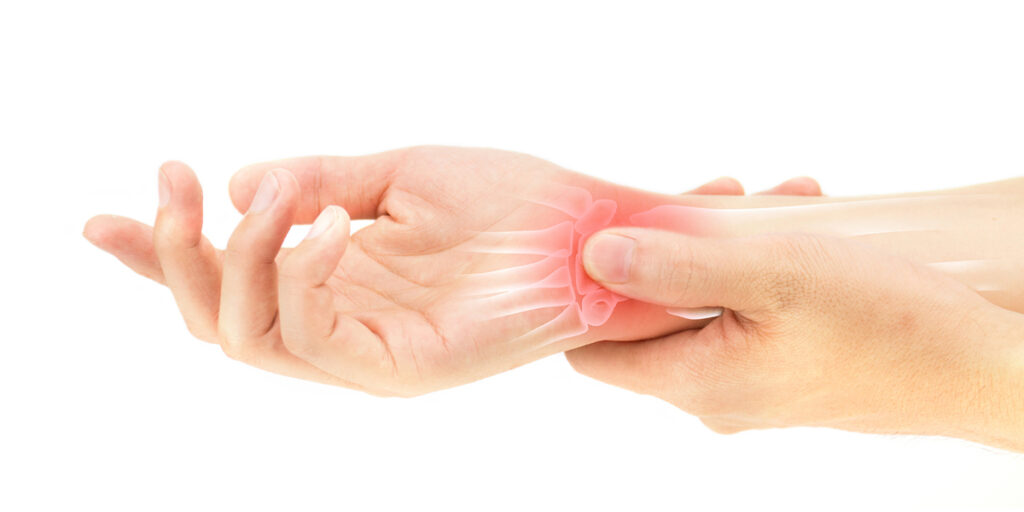When you think about your wrist, you probably don’t think about the 8 irregularly-shaped bones and over 20 ligaments connecting the arms and fingers. In fact, wrists and hands are so complex that accurately identifying and treating wrist pain can be tricky even for the most skilled pain treatment specialists. So, what’s the solution? Let’s talk about it.
Interested in Ketamine Infusion Therapy? Click Here to Learn More!
We’ve found that the primary source of wrist pain is trauma, as it can cause wrist ligaments to become lax. This leads to instability in one or more of the wrist bones. Over time, this wears away the cartilage and leads to arthritis. Hence, treatment should focus on restoring the integrity of the ligaments.
An old injury to the wrist ligaments can go undetected for years, but then suddenly make itself painfully evident. While performing downward dog in yoga, for example, pain shoots through the wrist and, upon examination, it’s discovered that the wrist had experienced some injury to the point the ligaments have become stretched and are worsening. Perhaps even swelling and arthritic symptoms are setting in.
“Big-surgery” often approaches wrist pain through the scope of wrist fusions and even wrist replacements. With wrist replacements, over 50% of patients report complications, such as serious contractures (when the ligaments and tendons become so scarred down the wrist won’t function) and failure of the implanted devices.

The wrist is comprised of 8 bones and many ligaments. Issues with any of these can cause severe pain.
In a wrist fusion, cartilage is removed from bones in the wrist, a graft is placed between the bones, and a metal plate bolts the wrist to the radial bone in the forearm. The purpose is to grow the bones of the wrist together with the radial bone, making them one solid unit. As you can imagine, this surgery is permanent and eliminates movement in the wrist.
Thankfully, wrist arthritis and instability can usually be treated without surgery and with ultraprecise, fluoroscopic, ultrasound-guided injections of platelet-rich plasma (PRP) and stem cells. We find the wrist commonly hurts due to bad biomechanics that are often centered around a neck problem where the nerves branch all the way down to the wrists and hands. Many times, we will focus on fixing the bad movement patterns or precisely injecting your own platelets into your arthritic wrist joints, ligaments, and/or neck.
If you or someone you care about is suffering from wrist pain, please let us know. Our team is dedicated to helping those suffering from chronic pain get their lives back.


